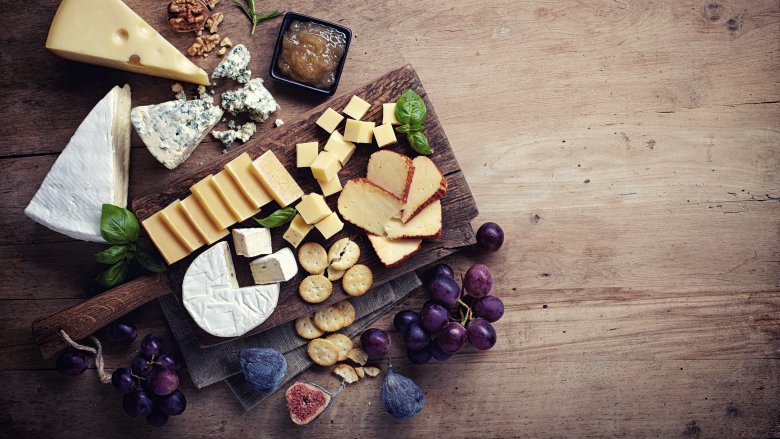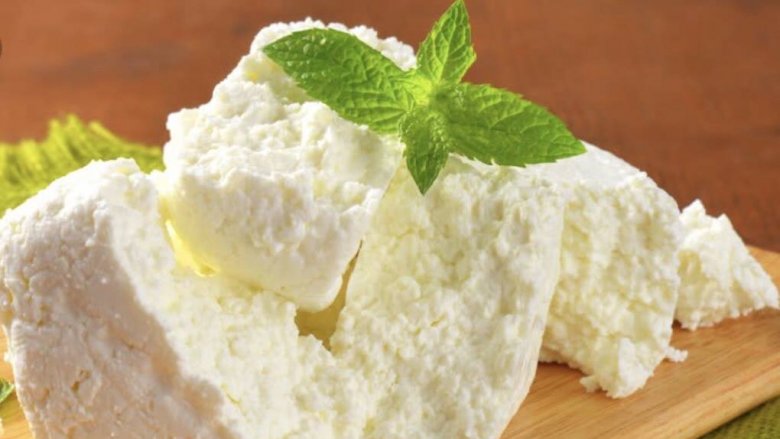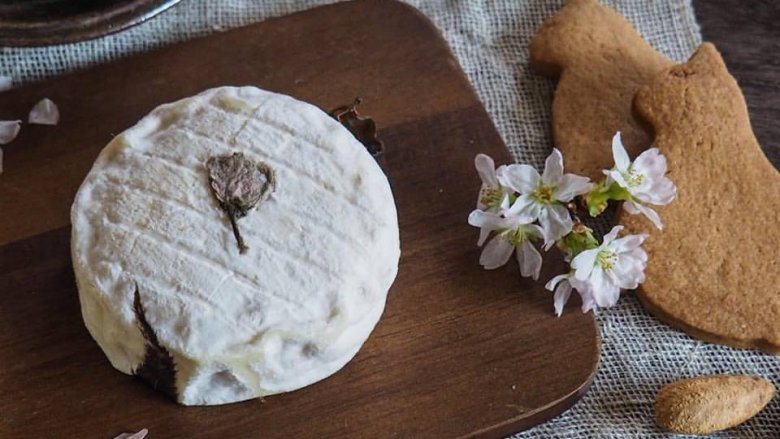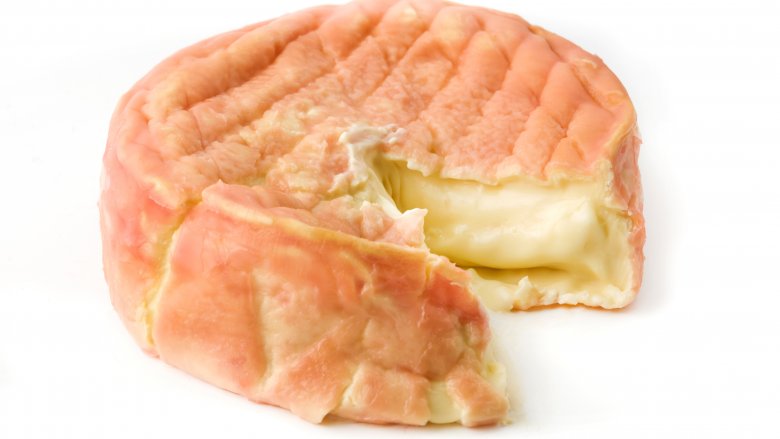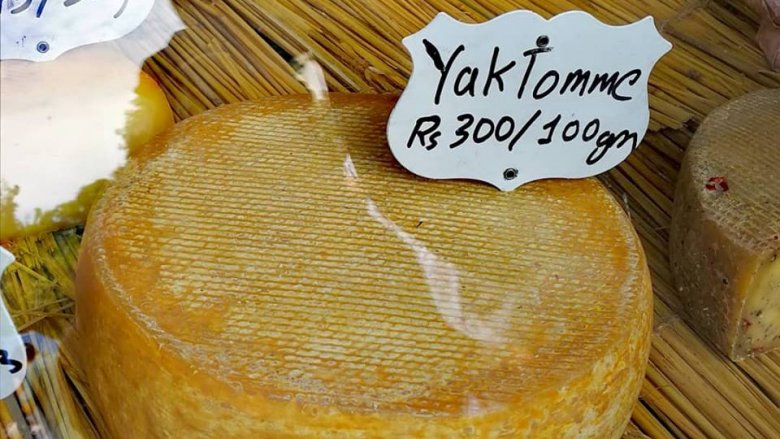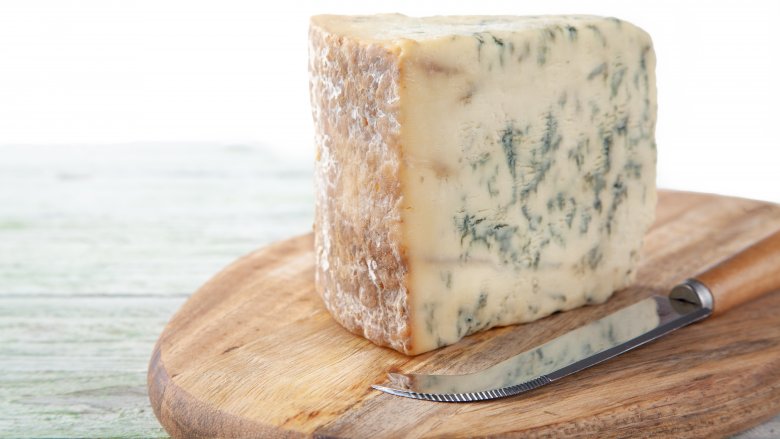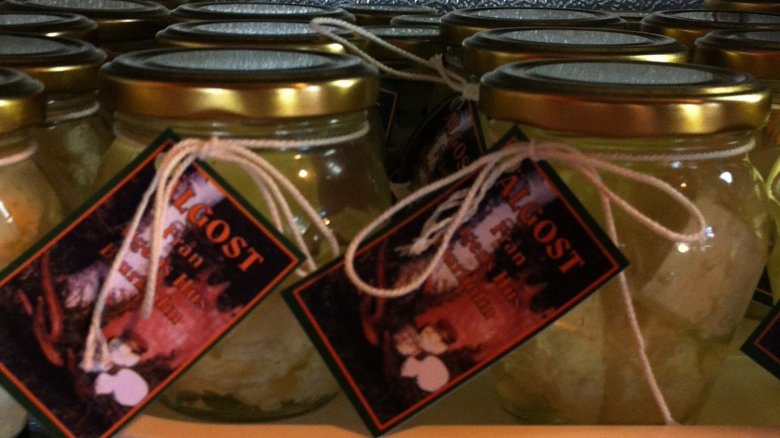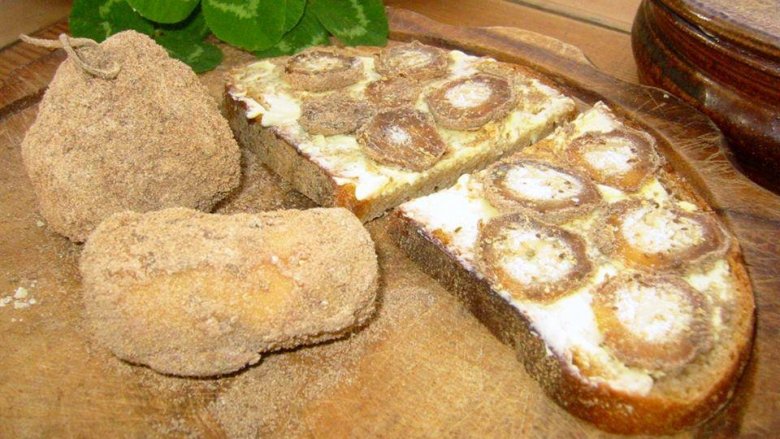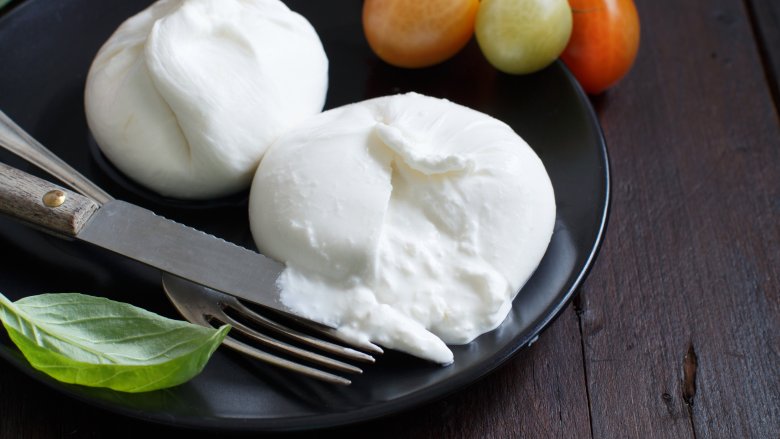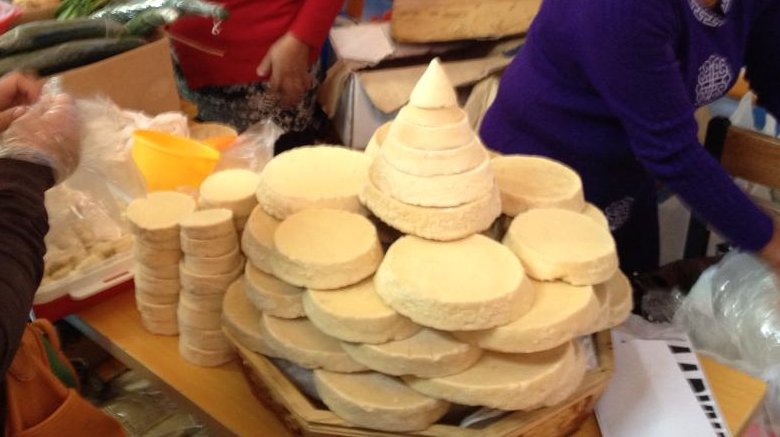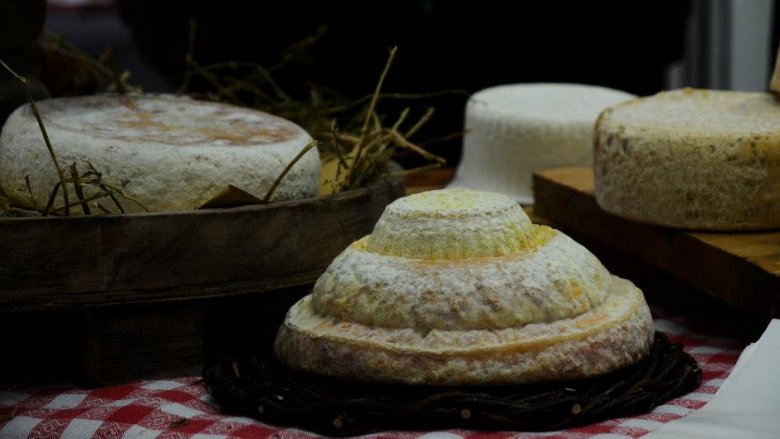Cheeses You Should Try At Least Once In Your Life
Just as there are movies to see (e.g. Casablanca), places to visit (Paris), and life goals (invent a time-traveling machine) to cross off your bucket list before you die, there are cheeses you should try at least once in your life.
The world is a treasure trove of exotic, unusual, and irresistible cheeses. Beyond grocery store shelves of American slices and Cheez Whiz cans, you'll discover cheese made from camels and ripened by live bugs. You can dig up cheeses with strange smells and mysterious backstories. You'll unearth fine fromages loved by geniuses like Da Vinci and Bonaparte themselves.
But even if you melt or shower cheese over every one of your meals, there isn't enough time or tummy space in your lifetime to try all the cheese in the world. To help you navigate the many Gruyeres, Goudas, and pecorinos out there, we've rounded up the ultimate cheese lover's bucket list of cheeses to try before you die.
Pule
Forget boring ol' dairy cow cheese. Pule cheese is churned from the milk of endangered Balkan donkeys raised on a farm on the Zasavica Special Nature Reserve in Serbia. Thrice daily, donkeys are milked by hand to produce a total of 300 milliliters (1.3 cups). To give you some perspective, it takes around 15 donkeys to generate a gallon of milk, and 3.5 gallons of milk to make a single pound of pule cheese.
The unique donkey milk cheese is prized not only for its rarity but it's high vitamin and mineral content. People have been drinking donkey milk to boost immunity and slow aging for thousands of years. Cleopatra famously bathed in the creamy substance to preserve her youthful beauty. And pule cheese is tasty to boot — according to the lucky few who have tried it, donkey milk cheese is at once crumbly and soft with an intense saltiness.
Tragically, as one of the world's finest cheeses, pule also happens to be one of the most expensive. As of 2016, a pound of pule could set you back around $1,700. With some good negotiating skills, you might be able to sneak a slice for just under $100.
Sakura cheese
The bulk of the world's gourmet cheese comes out of the U.S. and Europe, producers of more than 80 percent of the world's cheese annual cheese. But as the globe witnesses an artisan cheese renaissance, newcomer countries like Japan are carving a name for themselves in the cheese sphere.
Currently the world's biggest cheese importer, Japan is no stranger to good cheese. The country's first internationally recognized cheese, sakura or "cherry blossom" cheese, won the prestigious gold medal at the 2004 Mountain Cheese Olympics in Switzerland.
Sakura cheese hails from Hokkaido, the country's dairy farming heartland. Made from a magic blend of microbes and Japanese yeast, the cherry blossom cheese is encased a pillow of white mold. Inside, the creamy cheese is flavored with delicate notes of cherry blossoms and mountain berry leaves. The cheese is typically served on a shiso leaf with a tiny pickled cherry blossom that represents the Japanese flag in the middle.
Epoisses
All cheeses have a story and the Epoisses has a particularly succulent one. As the legend goes, Epoisses cheese was born in the Abbaye de Citeaux in the 16th century. It was within the walls of this hallowed monastery where Cistercian monks dreamed up a complex recipe for an equally complex cheese. To make Epoisses, monks would age semi-soft cow cheese for many weeks, then bathe the cheese in brine and brandy.
The recipe was adopted by Burgundy farmers and became popular across the region. During its heyday, the cheese was dubbed the "King of Cheeses" and won distinguished fans like Napoleon Bonaparte. However, the cheese all but disappeared during the early 20th century amid multiple world wars and industrialization.
The King of Cheeses was revived in 1956 by local farmers in Burgundy and is now beloved internationally — to those who can withstand its pungent smell, that is. In addition to its famously powerful aroma, the cheese has in intense, distinctive flavor that blends sweetness with salt and spice. Behind its rind, the Epoisses is a rich, liquid cream that spreads wonderfully on a baguette.
Yak cheese
Before globalization, you'd be hard-pressed to find any kind of dairy product in Asia — with a few exceptions. On the Tibetan Plateau and the Himalayan valleys of Sikkim, nomadic herders have herded and milked yaks for hundreds of years. Herders relied on yaks for meat and wool, in addition to milk that they would churn into butter and yogurt.
It wasn't until this century, however, that Tibetan indigenous groups began making cheese to appeal to the taste of Western visitors. Now, you can find the illusive yak cheese in local shops in Leh, a city within Ladakh region of Jammu and Kashmir. Or, if you're not in the mood for a trip, you could wait for it inevitably to pop up in a trendy restaurant or fancy grocery store in the U.S.
If you do manage to score a nibble of the ultra-rare yak cheese, you'll enjoy a delicate herbal flavor and numerous nutritional benefits. Compared to dairy cheeses, yak cheese is high in omega-3 fatty acids and conjugated linoleic acid — a compound associated with cancer- and diabetes-fighting properties.
Blue Stilton
There are many cheeses vying for the title of "King of Cheese" and Blue Stilton is another one. The quintessential British cheese has followed the same recipe since the 1700's. As an EU Protected Designation Origin food, the Stilton Blue can only be produced in authorized dairies. Today, there are only six creameries in the counties of Derbyshire, Nottinghamshire, and Leicestershire that are licensed to manufacture Blue Stilton cheese.
In order to produce genuine Stilton, dairies must abide by strict rules. According to regulations, a true Blue Stilton cheese is made from fresh, local, pasteurized milk and formed into a cylindrical shape. Stilton cheese should never be pressed and must be allowed to develop its crust naturally. Perhaps most importantly, Stilton Blue cheese should be pierced with its signature bright blue veins.
The marble-like cheese is soft with powerful flavor that is creamy and nutty at first with a salty finish. Slice it onto apple or pear and decide for yourself whether the Stilton deserves the "King of Cheese" title.
Moose cheese
Falling just behind pule donkey cheese, moose cheese is among one of the most expensive cheeses in the world. It's also one of the most difficult to come by — at the time of writing, there is only one place in the world where you can chow down on moose cheese.
Over in the Bjurholm region of Sweden, Elk House (aka Älgens Hus) produces and sells the moose cheese, made from the milk of three moose sisters named Gullan, Haelga, and Juno. The fact that all of the world's moose cheese comes from three moose that only lactate between the months of May and September is the root of the cheese's astronomically high price.
Moose cheese is available in four varieties: white mold cheese, feta, creamy blue cheese, and dried blue cheese. Feta, their best-seller, has been described as tangy and creamy with a slightly acidic taste sensation. In addition to being packed with flavor, moose cheese is among the healthiest cheeses in the world. Moose milk is credited with a huge range of nutritional benefits, including immune strengthening, inflammation reduction, and muscle mass development.
Milbenkäse
A cheese infested with creepy, crawly bugs sounds like it was born in the depth of cheese lovers' hell. But in fact, Milbenkäse — also known as "mite cheese" and (deceivingly) "spider cheese" — comes from Würchwitz, Germany.
In the tiny German town, cheesemakers follow a centuries-old method that involves placing unaged, white quark cheese in a wooden box full of mites and rye flour. The quark cheese is allowed to sit for several months, while the mites devour the cheese and rye flour while excreting a digestive enzyme that causes the cheese to ripen.
The smell of Milbenkäse being made may be kind of gross, but the resulting cheese is zesty and lemon-like. It's worth tasting for the bragging rights alone, though it isn't always easy to hunt down. Because the process involves, you know, live bugs, the German government keeps this particular cheese-making technique tightly regulated. Currently, manufacturers in Würchwitzer are the only ones licensed to produce the cheese. The town is so proud of this fact, they built a massive cheese mite statue in the center of town.
Burrata
Translating to "buttered" in Italian, burrata is a cheese that puts a decadent twist on traditional mozzarella. Essentially, burrata cheese is mozzarella that has been stuffed with a soft, stringy creamy center of curd and cream.
To make this magical cheese, artisans start with mozzarella curd that is formed into a pouch. The cheesemakers stuff the pouch with stracciatella, or strings of mozzarella that have been soaked in heavy cream. The top of the pouch is tied in a knot to keep the gooey insides from oozing out until you slice or bite into it and send the buttery goodness free.
Burrata's beauty is fleeting and the delicate cheese should be eaten within a day of its creation to avoid diluting the taste or texture. Purchase handmade burrata fresh at fancy cheese shops and grocery stores and serve it at room temperature on pizza, salad, or crusty bread.
Camel cheese
Perhaps the secret to amazing cheese is to source it from non-bovine animals. In addition to donkeys, yaks, moose, and humans, it turns out you can produce cheese from camels — and it'll be pretty good for you.
Camel milk has been enjoyed for centuries in number of African and Middle Eastern countries, including Kazakhstan, Morocco, and Mauritania. The beverage is associated with a number of health and therapeutic benefits, including virus and disease prevention and diabetes treatment. Compared to cow milk, camel milk is low in fat and high in calcium.
But while camel milk has been around for hundreds of years, camel cheese is a relatively new concept. A few rouge cheesemakers have taken on the challenge of making cheese from camel milk, which incidentally doesn't curdle naturally like the milk of other animals. Happily, back in the '90s, scientists identified an enzyme that can be added to camel's milk to form cheese.
Though you can find camel milk in the U.S., camel cheese has yet to take off. Until it does, your best bet for finding camel cheese may be to head to the West African country Mauritania, where the first camel cheese — caravane — was born. Caravane is similar to brie or Camembert, with a white crust and soft white center.
Montebore
Allegedly a favorite of Leonardo da Vinci, Montebore is a rare, raw-milk cheese named for a small town in the Curone Valle of Italy, the region where it's produced. According to cheese historians, the cheese may have originated as early as the ninth century. Many of the same cheese historians claim that the cheese was served by Leonardo Da Vinci at the notoriously extravagant wedding of Isabella of Aragon and Gian Galeazzo Sforza, niece of Ludovico il Moro, in 1489.
What makes the Motebore so special? Even before you take a taste, the Montebore makes an impression with its striking, wedding-cake like structure. The cheese is made with multiple tiers to replicate the tower of a castle. Spun from 75 percent raw cow milk and 25 percent sheep milk, Montebore has a distinctively herbal aftertaste. The cheese can be eaten fresh, semi-aged, or aged, and like most cheeses, pairs well with a glass of wine... or three.
